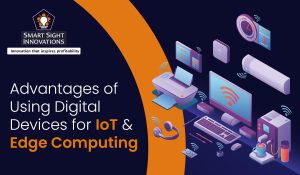 Organizations across sectors are experiencing the benefits of IoT and cloud computing bring to their processes by enabling access to real-time data on the go. This is specifically useful to enterprises that have an operational footprint in more than one location, as it seamlessly connects teams from multiple locations while collecting important insights from connected devices and making them available to everyone.
Organizations across sectors are experiencing the benefits of IoT and cloud computing bring to their processes by enabling access to real-time data on the go. This is specifically useful to enterprises that have an operational footprint in more than one location, as it seamlessly connects teams from multiple locations while collecting important insights from connected devices and making them available to everyone.
While cloud computing has been a boon to many, businesses are also realizing that providing access to the cloud is becoming expensive while access to the data is also not as fast as required. Edge computing has been touted as a solution to bridge this gap. Leading IoT application development service providers have started leveraging its benefits for small and large enterprises.
Edge computing enables workflows to be shifted to local devices connected to an IoT network, such as smartphones used by individuals. This greatly diminishes the long-distance connections between clients and servers.
With edge computing, the intelligence that processes the data is closer to the source where data was generated. This is especially critical when businesses rely on real-time data analysis.
Some of the benefits that organizations, as well as IoT software development companies, have already experienced with edge computing are:
1. Low latency
Many businesses depend on low latency. Edge computing helps reduce response times of connected devices for improved data processing and analysis speeds. For example, in the event of a car crash, sensors in the vehicle determine the probability of an accident and enable the timely deployment of airbags.
2. Data security threats
With multiple connected devices, there are numerous sources of data, which are considered as several possible entry points for malware that threaten the security and integrity of the entire network. This may lead to privacy and legal concerns for many organizations that store sensitive personal data or critical financial data. Many sovereign nations have imposed restrictions on providing access to IoT data outside national boundaries.
Edge computing overcomes such limitations by helping process data close to the source and gives a measure of control to governments as well as individuals over the personal information that is restricted to the geographical boundaries.
3. Bandwidth issues
Many enterprises utilize cloud computing to churn large swathes of data that can then be analyzed for actionable insights. When it comes to IoT, such enterprises will need massive processing and storage capabilities. Such institutions will be well served to use IoT devices that are connected to the cloud and leverage edge computing capabilities to permit businesses to limit the strain on available bandwidth. A practical example of this is law enforcement bodies analyzing streams of audio and video data close to the source in real-time by using cameras enabled with edge computing.
4. Isolating security issues
Organizations have constant apprehensions when there is a continuous stream of data from on-location servers or even devices to the cloud. Edge computing can be set up to provide extra layers of security locally to protect against possible hacks. This can be further enhanced by limiting breaches to the device and isolating such incidents without affecting any other data on the network.
5. Optimum use of connected devices
IoT app development services can augment the performance of institutional devices by connecting them to edge infrastructure, which can not only add functionalities but also act as an augmented security network.
This can be achieved by using device management platforms that in turn use the capabilities of distributed firmware updates, where the node on a specific device manages traffic to other connected devices instead of taking up valuable resources in the central cloud system.
Preventive diagnostics can also be performed using these edge nodes to identify and rectify possible disruptions before they occur as well as after downtime is detected.
6. Critical data identification
A major portion of the data collected by connected devices is of low priority that does not lead to any actionable insights when viewed exclusively. However, identifying key metrics that may lead to operational or process improvements – either on its own or when combined with other data – is a critical area where edge computing is increasingly contributing.
For instance, notifications of a vehicle crash when sent to the traffic department – although important – become more crucial when that same pathway sees higher traffic which may lead to additional incidents. Identifying traffic densities in the area where the accident has occurred and then sending instant alerts to the traffic department to take necessary preventive action is an important function that can be carried out with edge computing.
You can automate and oversee manufacturing and logistics by taking advantage of the many benefits that edge computing offers. Contact us today to know more about our end-to-end IoT development services.











